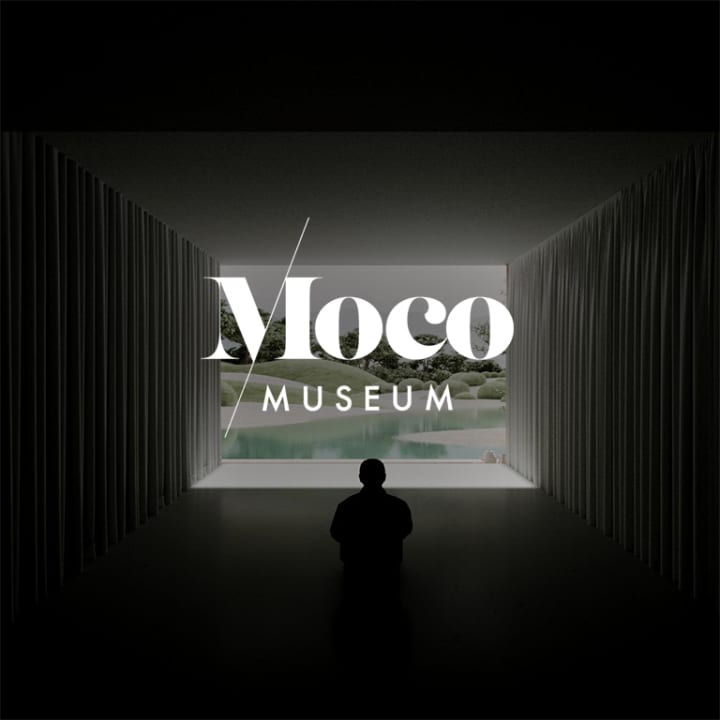
Earlier this month (August 2024), the highly celebrated Moco Museum opened its flagship location in London. Known for its stellar exhibits and installations from some of the world’s leading contemporary artists, Moco London joined locations in Amsterdam and Barcelona – which between them have racked up over five million visitors, including Barack Obama, Dua Lipa, and Steven Speilberg.
Thanks to its gleaming credentials, the modern and contemporary art museum was pretty much guaranteed to make a mark on London’s art scene upon arrival. With five-star reviews already rolling in, crediting the venue, the curation, and the diverse collection of top artists, I had to check it out for myself. Read on for my review of the Moco Museum in London.
The venue
Moco Museum is located mere moments from Marble Arch underground station. As I stepped through the entryway, emblazoned with “In Art We Trust”, I knew I was in for a treat.


Moco Museum is spread across three floors; guests enter at street level onto the middle floor. The top two floors are awash with natural light, while the basement is in complete contrast. Darker, with art hidden around corners, the basement level is a little more enigmatic, and to me, the art felt more ‘immersive‘ here.
The artworks
As advertised from the offset, Moco Museum is home to some of the world’s most famous modern and contemporary artists, such as Damien Hirst, Banksy, and Andy Warhol. I started my exploration at street level: I was in awe at the huge Keith Haring pieces, and it felt particularly cool to get close enough to a Picasso to see the fibres of the canvas. Many artworks had commentary printed on the wall alongside them for further context on the artists’ influences and story, and you could even scan a QR code on your phone for more information.
Next, I had a choice: go upstairs or downstairs. I chose to move down to the basement floor, and this became my favourite level, home to some of my favourite pieces in the entire museum. The craftsmanship of Miranda Makaroff’s ‘Carnabal Mental’ rug was so impressive; I spent ages observing the different elements. Pilar Zeta’s ‘Metaphysical Portals’ oil paintings were two more pieces I fell in love with; I just loved the colours and the shapes.


Although I couldn’t wrap my head around the concept of NFTs, I was enchanted by the Coral Arena piece by OMA/ Shohei Shigematsu, Charlotte Taylor, and Nicholas Preau on this floor too. A lot of the artwork on this basement level left me questioning my perception, for example, the ‘Great Rhombicosidodecahedron’ by Anthony James looked as though it was about to transport me to a new dimension (photography of this installation doesn’t do it justice!).
The final floor left for me to explore was the third level. I couldn’t hold back my smile as I stepped out of the lift to be greeted by the colourful, gleeful faces of the 2012 OsGemeos piece. It felt like fate that the sign to the right of this artwork stated this floor – the Moco Lab – was a temporary showcase created to demonstrate the power of art to make us smile.
On this floor, my favourite piece was ‘Freedom Dance’ by Soraya Sharghi; it was an acrylic painting that burst with colour and instantly told its story to the observer. Also on this level, I learned that Robbie Williams, of Take That fame, is now an artist of a different kind – and his bold artwork made a statement against the white walls.


To conclude this review of Moco Museum London, my visit truly demonstrated why Moco has earned such a stellar reputation worldwide. A visit here is a great way to spend an hour, especially as the art is so varied. As new pieces are added over time, I can see myself returning to Moco Museum – and with the mainstay pieces, whether it’s the first time or fourth time you’re seeing it, there’s always something new to discover, right?

